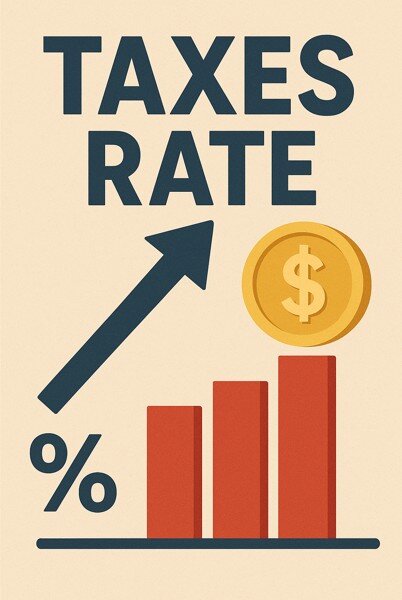Overview of Property Taxes in Texas

Texas is known for having some of the highest property tax rates in the United States. Unlike many states, Texas does not collect a state property tax. Instead, local governments—such as counties, cities, school districts, and special districts—set and collect their own property taxes to fund public services like education, road maintenance, and emergency services.
Texas relies heavily on property taxes to fund these services because the state does not have an income tax. This makes property taxes a primary source of revenue for local jurisdictions.
How Texas Property Tax Rates Are Calculated
Texas property taxes are calculated based on the appraised value of your property and the total tax rate set by local taxing entities. Here’s a simplified breakdown of the process:
- Appraisal: County appraisal districts determine the market value of your property each year.
- Tax Rate: Local entities (schools, cities, counties, etc.) set tax rates per $100 of appraised value.
- Calculation: Multiply the appraised value (minus any exemptions) by the combined tax rate to determine your total property tax bill.
Formula Example:
(Appraised Value – Exemptions) / 100 x Tax Rate = Property Tax Bill
Typical Property Tax Rate Ranges by County
Property tax rates vary widely across Texas. Here’s a general idea of what you might see:
- Harris County (Houston): 2.1% – 2.8%
- Travis County (Austin): 1.8% – 2.4%
- Dallas County: 2.0% – 2.7%
- Bexar County (San Antonio): 2.0% – 2.6%
- Collin County (Frisco/Plano): 1.8% – 2.3%
- El Paso County: 2.3% – 2.9%
- Williamson County (Round Rock): 1.9% – 2.5%
These rates include school districts, cities, counties, and any special taxing districts.
Factors Influencing Property Tax Rates in Texas
Several key factors influence property tax rates across Texas:
- School District Funding: Schools require the largest share of property tax revenue.
- City and County Budgets: Local government services such as police, fire, and road work also affect rates.
- Property Value Growth: Rapid growth in home values can increase tax bills unless rates are adjusted.
- Bond Measures and Voter-Approved Projects: Infrastructure projects can increase tax rates.
- Homestead and Other Exemptions: Exemptions for homesteads, seniors, veterans, and disabled individuals can lower taxable value.
Comparing Texas Property Tax Rates to Other States
When compared nationally, Texas consistently ranks among the top 10 states for highest property tax rates. According to recent data:
- Texas Average Effective Property Tax Rate: ~1.6% – 1.8%
- National Average: ~0.99%
- Low-Tax States: Hawaii (~0.31%), Alabama (~0.42%)
- High-Tax States: New Jersey (~2.21%), Illinois (~2.05%)
Though Texas homeowners may face higher property taxes, it’s worth noting that the lack of a state income tax helps balance the overall tax burden for many residents.
Property Tax Rates in Major Texas Cities
Here’s a look at property tax rates in some of the largest cities:
- Houston: ~2.3% – 2.6% (depending on school district and municipal services)
- Austin: ~2.1% – 2.4%
- Dallas: ~2.2% – 2.6%
- San Antonio: ~2.2% – 2.5%
- Fort Worth: ~2.1% – 2.4%
- El Paso: ~2.6% – 2.9%
Each city includes different taxing authorities, which means two properties with the same value in different areas can have vastly different tax bills.
Understanding Your Texas Property Tax Bill
A Texas property tax bill can seem complex, but understanding its components can help you manage it better:
- Appraised Value: Determined annually by the county appraisal district.
- Exemptions: Homestead, over-65, disabled, and veteran exemptions reduce taxable value.
- Taxing Entities: The bill lists each entity and its specific tax rate.
- Total Rate: Sum of all applicable tax rates per $100 of property value.
- Due Date: Taxes are usually due by January 31st of the following year.
Property owners have the right to protest their appraised value each year and can often save money by doing so, especially if market conditions or property issues suggest a lower value.